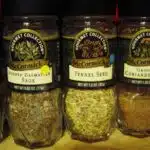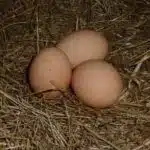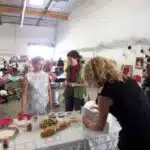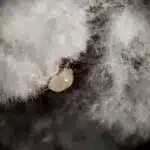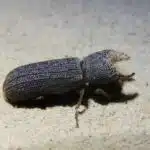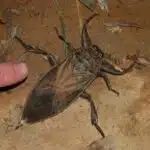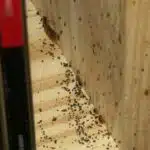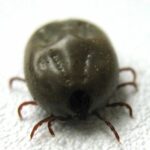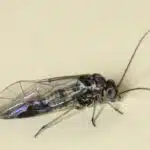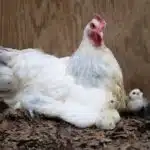Pantry moths, also known as Indian meal moths, are common household pests that can quickly become a nuisance if left unchecked. These small insects have a lifespan of up to 2 weeks and reproduce rapidly, laying up to 400 eggs at a time. Their larvae feed on stored food products such as grains, cereals, nuts, and dried fruits, contaminating them with their excrement and webbing. As such, pantry moth infestations can cause significant damage to food supplies and pose health risks to humans.
Fortunately, there are several measures that homeowners can take to get rid of pantry moths and prevent future infestations. In this article, we will explore effective strategies for identifying and eliminating these pesky insects from your pantry. We will provide expert advice on how to identify signs of infestation, properly dispose of contaminated food items, use safe insecticides and traps, and implement preventative measures to keep pantry moths at bay in the long term. With our tips and guidance, you’ll be able to reclaim your kitchen from these unwanted guests once and for all.
Identifying Pantry Moths
According to recent studies, pantry moths are becoming a common household pest, with an estimated 90% of households experiencing an infestation at some point. This can be alarming for homeowners who take pride in maintaining a clean and hygienic living space. Pantry moths are known to cause significant damage to food products as they lay their eggs on the surfaces of stored goods such as flour, rice, and cereals.
To identify pantry moths, one must first understand their physical characteristics. The adult moth has a wingspan of approximately 5/8 inches and is pale gray in color with dark lines running across its wings. The larvae are off-white in color with brown heads and measure around 1/2 inch long when fully grown. They can often be found wriggling in food products or along the edges of packaging.
Understanding the behavior of pantry moths is crucial in identifying an infestation early on. These pests prefer warm and humid environments, making pantries and cabinets ideal breeding grounds. Infestations can occur due to various reasons such as contaminated food brought home from grocery stores or by purchasing products that have already been infested. It is essential to detect these pests early on before they cause extensive damage to your stored goods.
Understanding The Life Cycle Of Pantry Moths
- Pantry moths go through four stages during their life cycle: eggs, larvae, pupae, and adult moths.
- The female adult moths lay eggs in food sources, typically grains, and these eggs are almost transparent and very small.
- After hatching, the larvae are the most damaging stage of the life cycle, as they consume the food sources that they were laid on.
- Once the larvae reach maturity, they form a pupa, which is a cocoon-like structure, and begin to transform into adult moths.
- Adult moths are typically brown or gray in color and have a wingspan of about 1/2 inch.
- Proper control of pantry moths requires thorough identification of the life cycle stages and thorough cleaning of the affected area.
Eggs
To truly understand the life cycle of pantry moths, it is important to delve into the topic of their eggs. These pesky insects lay their eggs in food sources such as grains, pet food and bird seed. Preventing eggs from hatching is one of the most effective methods for eliminating a pantry moth infestation.
To prevent eggs from hatching, it is important to identify potential breeding grounds and dispose of contaminated items. Pantry moths prefer warm and humid environments which make pantries and cupboards prime locations for laying eggs. Regularly inspecting and cleaning these areas can help prevent an infestation from occurring in the first place.
If you do find evidence of pantry moth eggs, removing them promptly is crucial. Eggs are small and difficult to spot, but they can be identified by their size and appearance. They are often white or off-white in color with a slightly curved shape. By disposing of any contaminated items immediately, you can prevent the larvae from emerging and further contaminating your pantry or cupboards.
Understanding how to prevent and remove pantry moth eggs is essential in eradicating an infestation. By taking these steps, you can effectively eliminate these pests from your home and protect your food sources from contamination.
Larvae
Understanding the life cycle of pantry moths is crucial in preventing and eliminating an infestation. Once they lay their eggs, it takes around a week for the larvae to hatch. The larvae are tiny, worm-like creatures that feed on food sources such as grains, cereals, and pet food. They can cause extensive damage to these items by spinning silk webs and leaving behind excrement.
To prevent reinfestation, it is important to remove any contaminated items from your pantry or cupboards immediately. This includes not only infested food but also any spilled grains or crumbs that could attract pantry moths back into your home. Additionally, natural moth deterrents such as cedar chips or essential oils can be used to keep moths at bay.
To get rid of pantry moth larvae, it is best to freeze any contaminated items for at least four days before disposing of them. This will kill both the larvae and any eggs they may have laid. Regularly cleaning and inspecting your pantry or cupboards can also help prevent future infestations from occurring. By understanding the life cycle of pantry moths and taking preventative measures, you can effectively eliminate these pests from your home and protect your food sources from contamination.
Pupae
Understanding the life cycle of pantry moths is essential in effectively controlling and preventing infestations. After the larvae have fed on food sources for several weeks, they enter the pupae stage. During this life cycle stage, pantry moth larvae spin cocoons around themselves and transform into adult moths. The pupae stage can last up to two weeks, depending on environmental conditions such as temperature and humidity.
Removing pantry moth pupae from your home is crucial in preventing reinfestation. Pupae can be found in cracks and crevices near food sources or on surfaces such as shelves or walls. Vacuuming these areas thoroughly can help remove any remaining pupae. It is also essential to discard any contaminated food items that may contain pupae.
Pantry moth pupae can have a significant impact on food safety as they can contaminate stored foods with their excrement and silk webs. Preventing infestations by regularly inspecting stored foods for signs of contamination, using natural deterrents such as cedar chips or essential oils, and ensuring proper storage techniques are all effective prevention measures. By taking these steps, you can protect your food sources from pantry moth infestations and ensure the safety of your family’s meals.
Assessing The Extent Of The Infestation
Before taking action against pantry moths, it is crucial to assess the extent of the infestation. Identifying the type of moth that has invaded your pantry is an essential first step. The most common species found in pantries are Indian Meal Moths and Mediterranean Flour Moths. Both species have a distinctive appearance, with their wings ranging from shades of gray to reddish-brown. Indian Meal Moths have a characteristic coppery color at their wing base while Mediterranean Flour Moths have two distinct silver-gray stripes on their wings.
Once you have identified the type of moth that has infiltrated your pantry, inspection techniques must be employed to determine how widespread the infestation is. Start by checking all open packages and containers for signs of infestation such as webbing, cocoons, or live larvae. Look for adult moths fluttering around or resting on walls and ceilings near food sources. Inspect cracks in walls and crevices where moths may hide or lay eggs.
Realizing that your pantry has been overtaken by moths can evoke feelings of disgust, frustration, and a sense of violation. It’s understandable to feel overwhelmed when faced with this situation, but there are steps you can take to regain control over your home environment. By following proper identification and inspection techniques, you’ll be one step closer to eradicating these pesky intruders from your life.
Transition: Now that you’ve identified the type of moth that’s taken up residence in your pantry and assessed the extent of the problem through inspection techniques let’s move on to inspecting your pantry for signs of infestation.
Inspecting Your Pantry For Signs Of Infestation
Pantry moths can be identified by their small, brownish-gray wings and the distinctive “humpbacked” shape of the adults. Pantry moth larvae are generally found in stored foods and feed on grains, cereals, nuts and other dry goods. Infestations can often be identified by the webbing and frass (insect droppings) the larvae leave behind. Common signs of pantry moth infestations can also include a ‘musty’ smell, small holes in food packaging, or the presence of live moths within the pantry.
Identifying Pantry Moths
When inspecting your pantry for signs of infestation, it is crucial to identify the pest in question. In this case, we will focus on identifying pantry moths. The first step is to look for their eggs, which are tiny and usually found on or near food items. These eggs are white or cream-colored and can be difficult to spot with the naked eye.
Once you have identified the eggs, it is essential to differentiate pantry moths from other pests. Pantry moths are small, about 1/4 inch in length, with wings that fold flat over their bodies when at rest. They are typically brownish-gray in color with distinctive markings on their wings. Other pests that may be mistaken for pantry moths include grain beetles and saw-toothed grain beetles, which have a similar size and appearance but lack wings.
By properly identifying pantry moths, you can take the necessary steps to eliminate them from your pantry and prevent further infestations. Regular inspections of your pantry, proper storage of food items, and prompt disposal of any infested products are all key measures in preventing these pests from taking root in your home. Remember that early detection and swift action are critical in managing any pest infestation.
Finding Pantry Moth Larvae
After identifying the eggs and adult pantry moths, it is time to look for their larvae. The larvae of pantry moths are small, white or off-white worms that can grow up to 1/2 inch in length. They are typically found on food items such as grains, cereals, nuts, and dried fruits. Checking expiration dates is crucial as these pests often infest expired products first.
One way to check for pantry moth larvae is by vacuuming the shelves of your pantry thoroughly. Pay close attention to cracks and crevices where debris may accumulate. You may also find larvae crawling on the walls or ceiling of your pantry if the infestation has become severe. It is crucial to dispose of any vacuumed debris promptly and seal it in a plastic bag before disposing of it outside.
If you find any signs of pantry moth larvae in your pantry, it is essential to take immediate action. Remove all affected products from your pantry and dispose of them in a sealed plastic bag outside of your home. Thoroughly clean all surfaces in your pantry with soap and hot water, paying close attention to corners and cracks where debris may accumulate. By taking these steps, you can prevent further infestations and keep your home free from these pesky pests.
Properly Disposing Of Contaminated Food Items
As the old saying goes, prevention is better than cure. This is especially true when it comes to pantry moths. If you want to prevent their recurrence, you must dispose of contaminated food properly. First, remove all infested food items from your pantry and seal them in a plastic bag. Do not throw them in the trash can as this will only spread the infestation. Instead, take the bag outside and dispose of it in a sealed outdoor trash container.
Next, thoroughly clean your pantry shelves with soap and hot water. Pay special attention to cracks and crevices where moth eggs may be hiding. After cleaning, sanitize your pantry by wiping down all surfaces with a solution of equal parts water and white vinegar.
Finally, if you are unsure whether an item is infested or not, freeze it for at least four days before throwing it away. This will kill any eggs or larvae that may be present. By following these simple steps for disposing of contaminated food items, you can help prevent a recurrence of the pantry moth infestation in your home.
To ensure that your efforts to get rid of pantry moths are successful, it is important to also clean and sanitize your pantry thoroughly. In the next section, we will discuss how to do this effectively so that you can eliminate any remaining moth eggs or larvae and prevent future infestations from occurring.
Cleaning And Sanitizing Your Pantry
- Pantry shelves should first be cleaned with a vacuum to remove any dust and debris, as well as any pantry moths or larvae that may be present.
- Any food items that have been infested should be discarded immediately to prevent the spread of any larvae or eggs.
- Pantry shelves should then be wiped down with warm soapy water and a cloth to remove any remaining residue.
- Pantry surfaces should then be sanitized with a solution of water and disinfectant to kill any remaining pests.
- All food items should be inspected and any infested items should be discarded.
- Finally, pantry shelves should be lined with a layer of wax paper to prevent future infestations.
Cleaning Pantry Shelves
When it comes to getting rid of pantry moths, one crucial step is cleaning your pantry shelves. Pantry organization is essential in preventing future infestations and keeping your food safe from these pesky insects. As a pest control expert, I recommend removing all items from your pantry shelves and inspecting them for any signs of moth activity.
Once you have removed all the items from your pantry shelves, it’s time to clean them thoroughly. Use a vacuum cleaner or a damp cloth to remove any crumbs or debris that could be hiding moth eggs. Afterward, wipe down every surface with warm soapy water and allow them to dry completely before returning anything to the shelves.
To further prevent future infestations, consider investing in shelf liners for your pantry organization. These liners not only keep your shelves clean but also create an additional barrier between your food and any potential moth eggs. By following these simple steps when cleaning and organizing your pantry, you can ensure that it remains a safe space for storing food without the threat of pesky pantry moths lurking around.
Disposing Of Infested Food Items
After cleaning and organizing your pantry, the next step is to dispose of any infested food items properly. It is crucial to identify which food items are infested and remove them immediately from your pantry. This step is essential in preventing further infestations and ensuring that your pantry remains a safe space for storing food.
To dispose of infested food items, you can either throw them away or freeze them for at least four days. Freezing the infested food items will kill any moths or larvae that might be present in the food. After freezing, discard the item in an outside trash bin to prevent future infestations.
It is important to note that disposing of infested food items alone may not be enough to prevent future infestations. To ensure that your pantry remains free from pantry moths, it’s vital to continue monitoring it regularly for signs of moth activity, follow proper storage techniques, and maintain good hygiene practices when storing food. By following these steps, you can keep your pantry free from pesky pantry moths and protect your stored foods from damage or contamination.
Sanitizing Pantry Surfaces
After disposing of infested food items, the next step in cleaning and sanitizing your pantry is to sanitize pantry surfaces. This step is crucial in preventing re-infestation of pantry moths and other pests that may contaminate stored food items. Sanitizing pantry surfaces involves removing any debris, spills, or residue left by infested foods and then using effective disinfectants.
Choosing effective disinfectants for sanitizing pantry surfaces is essential. Some disinfectants are not safe for use on food contact surfaces and may leave harmful residues that can contaminate food items. It is recommended to use disinfectants that are approved for use on food contact surfaces such as hydrogen peroxide, vinegar, or a solution of water and bleach. These disinfectants can effectively kill any remaining eggs, larvae, or adult moths that might be present in your pantry.
To sanitize pantry surfaces, start by removing all stored items from your shelves and drawers. Use a dry cloth or vacuum cleaner to remove any debris or spills left behind by infested foods. Then, apply the chosen disinfectant to a clean cloth and wipe down all surfaces thoroughly. Pay attention to corners, cracks, and crevices where pantry moths might hide their eggs. Allow the disinfectant to sit on the surface for a few minutes before wiping it off with a clean damp cloth. Once all surfaces are sanitized and dry, you can return your stored items back into the pantry.
By following these steps to sanitize your pantry surfaces properly, you can prevent re-infestation of pantry moths and ensure that your stored food items remain safe from contamination. Remember always to monitor your pantry regularly for signs of pest activity and maintain good hygiene practices when storing food items.
Using Safe Insecticides And Traps
To effectively get rid of pantry moths, it is important to consider safe and eco-friendly methods. Using safe insecticides can be a viable option for controlling these pests. However, it is crucial to choose insecticides that are specifically designed for pantry moth control and labeled as safe for indoor use. These insecticides should also be used in accordance with the manufacturer’s instructions.
Eco-friendly traps can also be an effective way of controlling pantry moths. These traps use pheromones to attract male moths and trap them. The trapped male moths are then unable to mate with female moths, thereby reducing the population over time. Additionally, these traps do not contain harmful chemicals and are safe for use around children and pets.
When using both safe insecticides and eco-friendly traps, it is important to regularly monitor your pantry for signs of infestation. This will help you identify any potential problems early on and take action before the situation worsens. By maintaining a clean and organized pantry, you can also prevent future infestations from occurring.
- Regularly inspect your pantry for signs of infestation such as webbing or larvae.
- Keep all food items in sealed containers.
- Dispose of any infested products immediately.
By following these steps, you can successfully control pantry moth infestations using safe and eco-friendly methods. However, if you prefer natural remedies for pest control, there are several options available that can be just as effective in eliminating these pests without the use of harmful chemicals.
Natural Remedies For Pantry Moth Control
Natural remedies for pantry moth control can be an effective and safe way to eliminate these pests from your home. Herbal solutions are one such remedy that can be used to repel pantry moths. Bay leaves, for example, have been found to possess insect-repelling properties due to the presence of eucalyptol and other essential oils. Simply place a few bay leaves in your pantry or food storage area to deter these pests.
Another natural remedy that has been found to be effective against pantry moths is the use of essential oils. Peppermint oil, for instance, is known for its insecticidal properties and can be used as a natural repellent against various types of pests including pantry moths. Just mix a few drops of peppermint oil with water and spray it in areas where you suspect the presence of these insects.
While natural remedies may work well in keeping pantry moths at bay, it is important to also consider setting up moth repellents as a preventive measure. This can include using pheromone traps or sticky traps that attract and capture adult male moths, thus preventing them from mating with females and reducing their population over time. In the next section, we will discuss some effective ways of setting up moth repellents in your home without having to resort to harmful chemicals or pesticides.
Setting Up Moth Repellents
To prevent pantry moths from invading your kitchen, setting up moth repellents is a must. These tiny insects can easily sneak into your food supply, causing considerable damage and contamination. To ensure that you are not plagued by these pesky creatures, it is essential to take the necessary measures to repel them effectively.
One way to keep moths away is by using DIY repellent recipes. These natural remedies can be made using ingredients readily available in your home or garden. Some popular options include cedar chips, lavender sachets, and peppermint oil. These natural repellents are effective in keeping moths away while also leaving a pleasant scent in your pantry.
If you prefer buying effective repellents, there are several options on the market that can do the job for you. Look for products containing pheromones as they mimic the natural scent of female moths and disrupt their mating habits. Additionally, sticky traps can be placed near infested areas to trap adult moths before they lay eggs. However, it’s essential to note that chemical-based repellents should be used with caution as they may pose health risks if ingested.
As you set up moth repellents in your pantry, remember to inspect your food items regularly and discard any infested ones immediately. Keeping your shelves clean and well-organized can also help prevent future infestations. In the next section, we will discuss how storing food properly can further minimize the risk of pest problems in your kitchen.
Storing Food Properly
Proper food preservation is crucial in preventing pantry moths from infesting your kitchen. One effective way to preserve food is by storing them in airtight containers. These containers prevent moths from accessing the food and laying eggs on them. It is essential to use storage containers made of durable materials such as glass or hard plastic that can withstand high temperatures during cleaning.
When storing grains, it is vital to check for any signs of infestation before transferring them into an airtight container. Infested grains should be discarded immediately to prevent further spread of the pests. Additionally, it is advisable to freeze grains for at least 72 hours before storing them in a container. This process eliminates any moth larvae that may have been present.
Proper storage containers are just one part of the solution to eliminate pantry moths. You should also ensure that your pantry is clean and tidy at all times. A clean pantry reduces the risk of pest infestation significantly. In the next section, we will explore strategies for maintaining a clean and tidy pantry that will help keep these pesky insects at bay.
Maintaining A Clean And Tidy Pantry
Maintaining a Clean and Tidy Pantry is crucial when it comes to preventing pantry moth infestations. Tips for organization include storing food items in airtight containers, keeping the pantry clean and dry, and regularly checking for expired or spoiled food. This not only prevents pests from invading the pantry but also helps keep the food fresh and safe to eat.
Maximizing space in the pantry can also help with pest prevention. Try using shelves or racks to keep items off the floor and avoid overcrowding. This makes it easier to spot signs of infestation as well as reduces hiding spots for pests. Additionally, using clear containers or labeling can help identify food items quickly, reducing the time the pantry door is open.
By following these tips for organization and maximizing space, you can greatly reduce the likelihood of a pantry moth infestation. However, it is still important to regularly check for signs of infestation such as webbing or larvae. In the next section, we will discuss how to properly inspect your pantry for any potential pest problems.
Regularly Checking For Signs Of Infestation
Preventing pantry moth infestations can be a challenging task. However, early detection is key to avoiding a full-blown infestation. Regularly checking your pantry for signs of pantry moths can help identify any issues before they become severe. Inspect all stored food items, including pet food and birdseed, as these can also attract pantry moths.
To ensure that you are checking your pantry correctly, follow these four steps:
- Check for the presence of adult pantry moths.
- Look for larvae or webbing in stored food items.
- Check for signs of damage to packaging caused by the larvae.
- Use pheromone traps to monitor any potential activity.
Regular inspection is particularly important if you have had an infestation previously or if you live in an area where pantry moths are common. By taking preventive measures and detecting any potential infestations early, you can save time and money in the long run.
If despite your efforts, an infestation persists, seeking professional help may be necessary to eliminate it effectively.
Seeking Professional Help If Necessary
Imagine you are the captain of a ship, sailing on the vast ocean with no end in sight. Suddenly, a storm rages and your ship is taking on water. You do everything in your power to fix the problem, but it only gets worse. At this point, it’s time to call for help. Similarly, when dealing with a pantry moth infestation that seems beyond control, it may be necessary to seek professional assistance.
Hiring professionals can be an effective solution for eliminating pantry moths from your home. Pest control services have access to specialized equipment and treatments that are not available over-the-counter. They also have extensive knowledge and experience in identifying the source of the infestation and determining the best course of action. Depending on the severity of the situation, they may use chemical or non-chemical methods to exterminate the moths.
It is important to keep in mind that hiring professionals can be costly, but it may ultimately save you time and money by preventing further damage to your pantry items. Additionally, pest control services typically offer warranties or guarantees for their work, giving you peace of mind knowing that if the problem persists, they will return to address it. If you decide to hire professionals, be sure to research potential companies thoroughly and ask for referrals from friends or family members who have had similar issues.
Transitioning into preventing future infestations, one must understand that simply eliminating current pantry moths is not enough. It is essential to take preventative measures such as regularly cleaning and inspecting food storage areas and using airtight containers for all pantry items. By doing so, you can avoid future infestations and maintain a pest-free home environment.
Preventing Future Infestations
Preventive measures are crucial for avoiding future infestations of pantry moths. First, it is important to inspect all food items before bringing them into the house. Discard any packages that show signs of moth infestation or have been opened previously. It is also essential to store food properly in airtight containers to prevent access by these pests.
Long term solutions involve keeping your kitchen clean and free from clutter. Make sure to dispose of food scraps immediately and thoroughly clean surfaces where crumbs may accumulate. Additionally, regularly vacuuming and dusting your pantry area can help remove any eggs or larvae that may be present.
Another effective preventive measure is pheromone traps. These traps work by attracting male moths and preventing them from mating with females. This reduces the population of pantry moths over time, ultimately leading to fewer eggs being laid and fewer larvae hatching.
By following these preventive measures and long-term solutions, you can significantly reduce the likelihood of future pantry moth infestations. In the subsequent section, we will discuss taking action to eliminate existing infestations and further steps for prevention.
Conclusion: Taking Action To Eliminate Pantry Moths
As we have discussed in the previous section, taking preventive measures is crucial to avoid future infestations of pantry moths. However, sometimes despite our best efforts, these pesky insects find a way into our homes and invade our pantries. In this section, we will discuss how to take action and eliminate pantry moths.
Dealing with a pantry moth infestation can be compared to removing weeds from a garden. Just like weeds, pantry moths multiply quickly and spread rapidly if not dealt with promptly. DIY methods such as using pheromone traps or vacuuming the affected areas can be effective in getting rid of adult moths and their larvae. However, these methods may not be sufficient for severe infestations. In such cases, seeking professional help is recommended.
When it comes to eliminating pantry moths, prevention is always better than cure. Regularly inspecting food items for signs of infestation and storing them in airtight containers can go a long way in preventing an invasion. It’s also essential to keep the pantry clean and free from crumbs or spills that can attract these insects.
- Feeling frustrated by the sight of pantry moths? Try blasting some upbeat music while cleaning your pantry to lift your mood.
- Worried about your family’s health due to contaminated food? Visualize serving them safe and healthy meals after successfully getting rid of the pests.
- Tired of constantly throwing away infested food? Imagine saving money on groceries by having a well-maintained pantry free from any pest-related damages.
In conclusion, eliminating pantry moths requires quick action and diligence. While DIY methods can work for minor infestations, severe cases often require professional help. Prevention remains the key to avoiding future invasions and ensuring that your family consumes only safe and healthy food.
Conclusion
Pantry moths are an unwelcome guest in any home, as they can quickly spread and contaminate food items. It is important to identify these pests, understand their life cycle, and assess the extent of the infestation before taking action. Inspecting your pantry for signs of infestation and properly disposing of contaminated food items are crucial steps in eliminating pantry moths.
Regularly checking for signs of infestation and seeking professional help if necessary can also aid in eradicating these unwanted guests. Preventing future infestations through proper storage techniques and regular cleaning can ensure that pantry moths do not return. As a pest control expert/entomologist, it is essential to take action against pantry moths to protect both your home and your health. By following these steps, you can successfully eliminate pantry moths from your home and prevent future invasions.
Image Credits
- “Pantry Moth” by grantdaws (featured)




